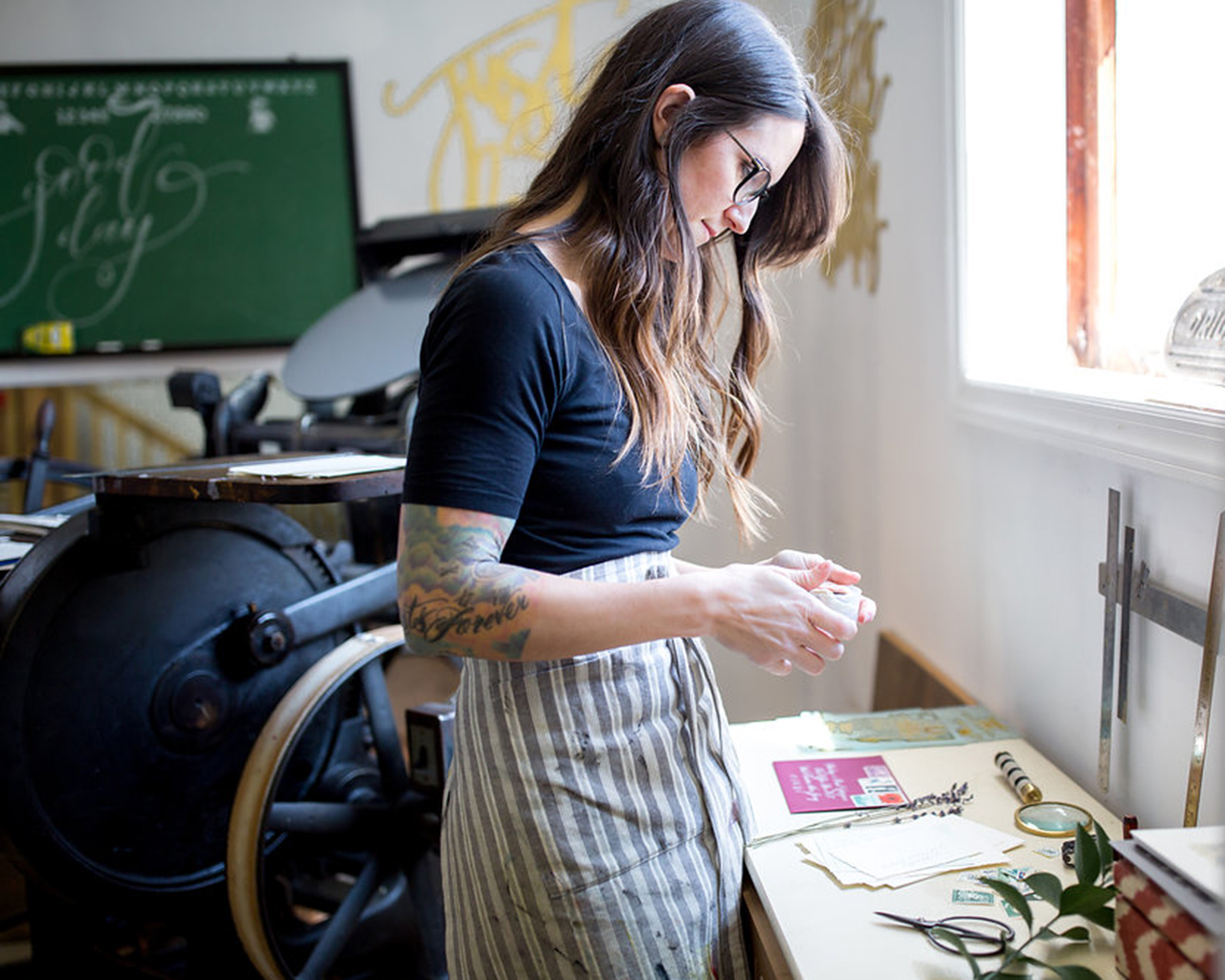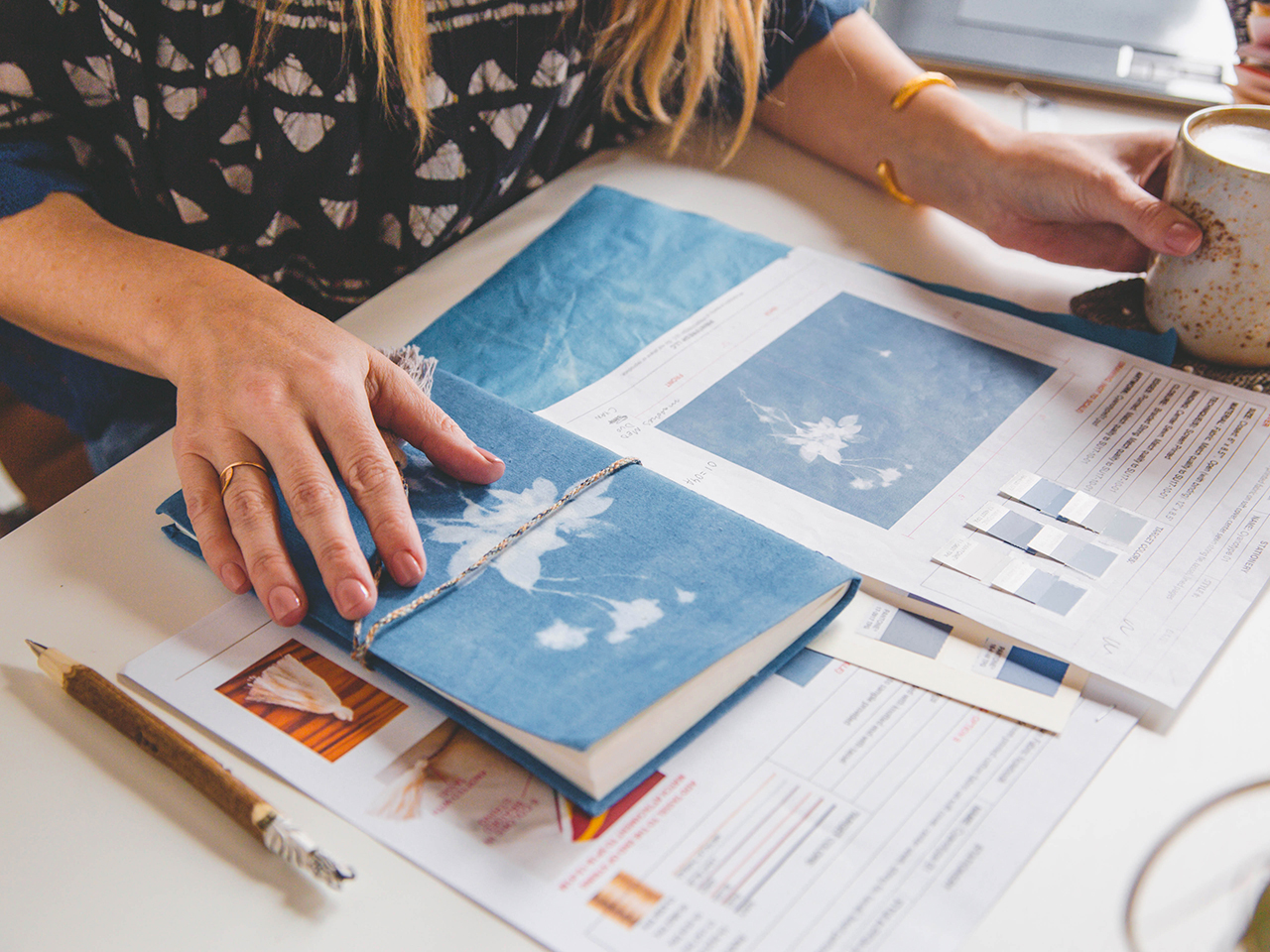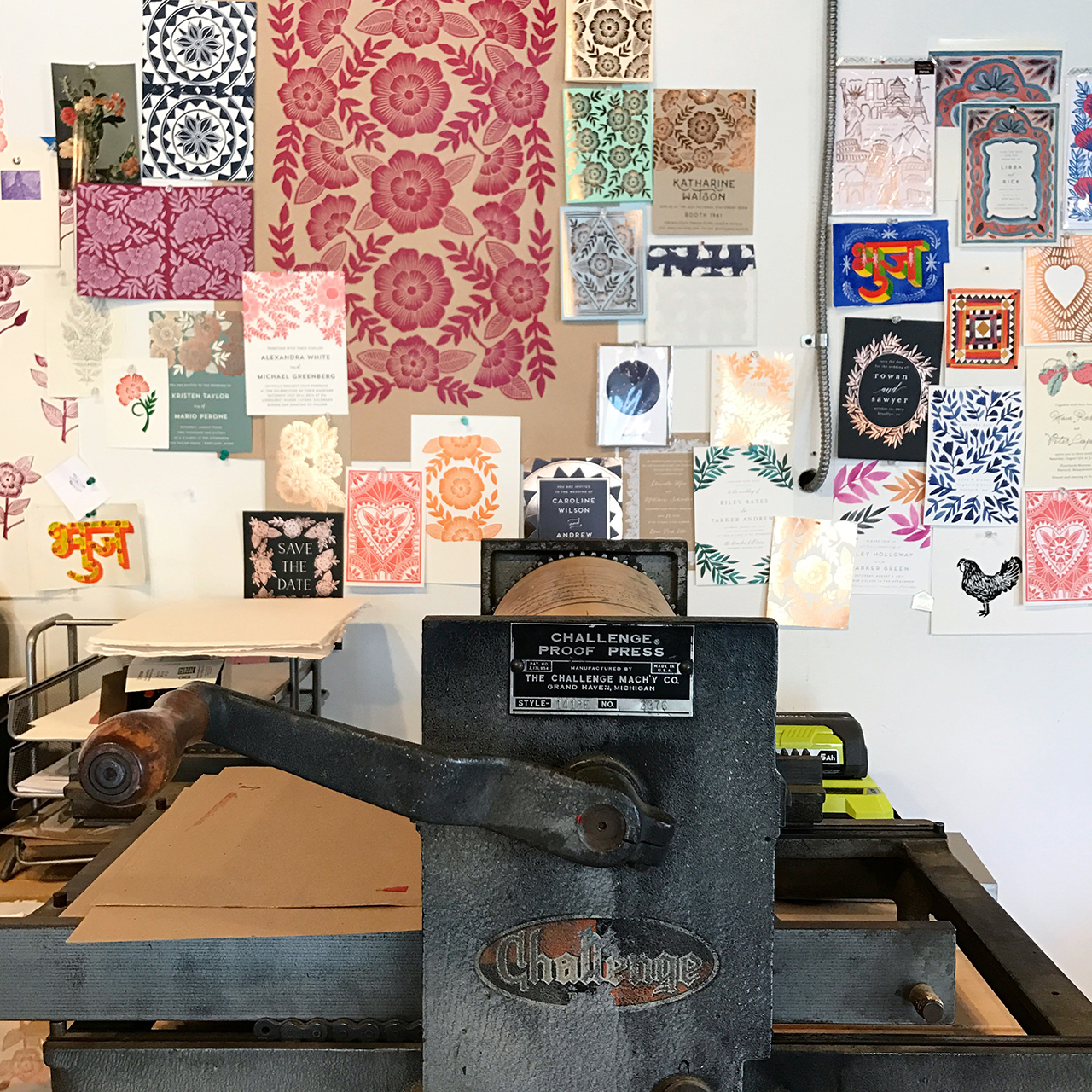Happy Tuesday! We’re back with another installment of Behind the Stationery featuring one of the best in the business, Beth Snyder of 1Canoe2! Beth moved back to her small town roots and shares how this is so important to her daily life and business. Having been in the business for 10 years and now managing 10 employees, Beth is here to share how she keeps the look and feel of 1Canoe2 consistent and each collection consistent across the brand after all this time. Take it away, Beth! —Megan Soh

Photo by Drew Piester Photography
From Beth: I have always been a visual person. I don’t remember a time when I didn’t love to draw, look at photos of far away lands in my parents’ National Geographic magazine, do crafts, and generally “make stuff.†This love of art mixed with my tendency to dream really big led me to start several little companies which served as a vehicle to sell my creations and enhanced the planner side of my personality.
I got a BFA in Graphic Design and Fibers from the University of Missouri (Mizzou) and while I was there, I worked almost full time at the local NBC affiliate TV station doing every kind of design work you can imagine. And when you work at a small company and show some initiative, you get to have a lot of responsibility! I designed TV sets, graphics for the news, logos, signage, and marketing materials. When I graduated I looked around and didn’t think I could find a creative job close to home, so I headed to Nashville, Tennessee (before it was the hot thing to do) and worked at the CBS affiliate there for 6 years. I won an Emmy for graphic design in television, and I also met my husband!

I never lost my intense sense of homesickness for gravel roads, big open skies, and being a small town dweller. We moved “back home†to our sweet little town of Fulton, Missouri (population: 12,000).
I’ve always had a penchant for selling a little something that I made. At the end of my stay in Nashville, I got a tiny Kelsey Excelsior 5×8 letterpress and learned everything I could from blogs, a friend, and internet forums. Pretty soon, I called up my childhood friend who was a talented artist and told her to send me some of her drawings and I would make plates which we could print together. 1canoe2 was born! That was almost 10 years ago, and studio locations and iterations of the business structure have come and gone. Now we have 10 employees, our own building in our historic town, and a following of really devoted fans who love to see what we’re up to on Instagram!

I’d love to tell you a little bit about our corner of the world, because we believe it’s at the very center of our success. We’re based in the middle of a rural part of the Midwest. There’s a grand total of 40,000 people who live in our county. A mile from my house in the middle of town, you’ve got dirt roads and corn fields—and I love it! I can go out rainbow chasing and post it on Instagram before it’s faded.
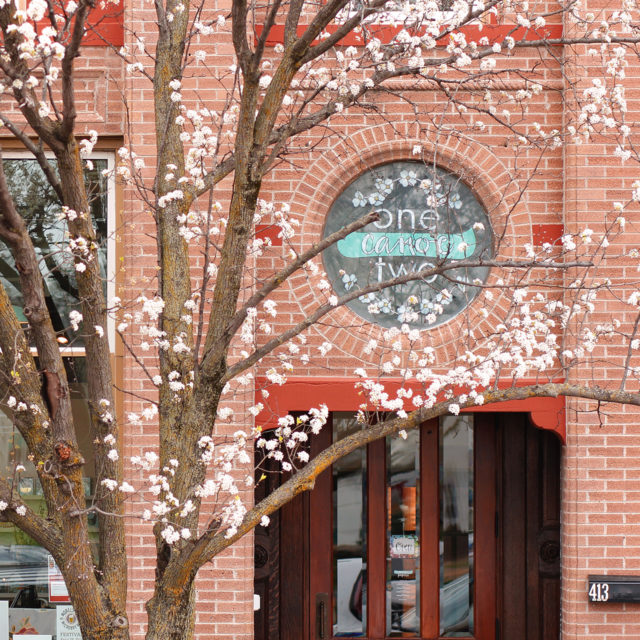
I live just 4 blocks from our studio/warehouse/paperie, on the same street which allows me to walk or ride my bike to work. It’s in an historic home near the downtown Brick District and we love it a lot. My husband, daughter, and our dog Trixie and I walk downtown at least once almost every day. All the little small town parades go right past our front porch. If you’re gonna go small town, do it up!

Our studio space is 5,000 square feet right in the middle of the historic business district and it was built in 1902. When I purchased the building in 2016, it hadn’t been inhabited for about 9 years, but in previous lives it had been a bank, a lawyer’s office, and an insurance company. It was definitely a space that required major vision to see through the 12 (!) layers of wallpaper, drop ceilings, maroon carpet, and the 1980s wallpaper. But from the moment I first stepped in the building, I saw a few architectural details that hinted to the treasures that had been concealed with generations of bad taste and small budgets. My favorite discoveries were the intact 14-foot pressed tin ceiling that was actually hidden above an 8 foot ugly fluorescent light drop ceiling, and the curved corner wall on which we painted a mural in the Paperie.

Now we have a bright sunny office for our team, and a little shop that is a benefit to the community, that is also the most incredible playground for me as a designer and product developer. It’s also amazing to experience the wholesale industry from the side of the buyer – who is our main customer! It’s made us much better at customer experience for sure.

We are artists and, first and foremost, an illustration company. We happen to sell our artwork on stationery like cards, calendars, planners, etc., because paper is our passion. We started out as a letterpress company with a couple of presses in a barn, and now we use an offset printer to produce our full-color illustrations.

Our business is unique because of our signature style and the influences that surround us here in the rural Midwest. We hope that our fans could see a card in a shop and immediately know it’s ours. We put a lot of heart and soul into the artwork, and we lead with our paintbrushes.

Our creative process is collaborative, and starts with a brainstorming session with every member of the team from shipping and production up to me. We all throw out ideas that we think might make interesting cards — either visuals or wording. The actual design process then goes to the art team, which consist of me as the creative director (and I do a little of the art) and two artists who paint to their individual strengths.


Since we’re three individuals working as a team to create a cohesive look, we have had to hone our process. For our big collections, like the new Goldenrod which we just launched, we work for about a year from a creative brief. Last summer I was really inspired by all the warm, peachy-golden light at the end of August; so I created a creative brief that listed out all the visuals that came to mind and created a vision board of sorts. During one of our art meetings, I presented the concept to Haley and Kate and over the next couple of weeks they went out and pulled their own inspiration images and phrases and added to the brief. We reconvened, and started making artwork based on this creative brief.

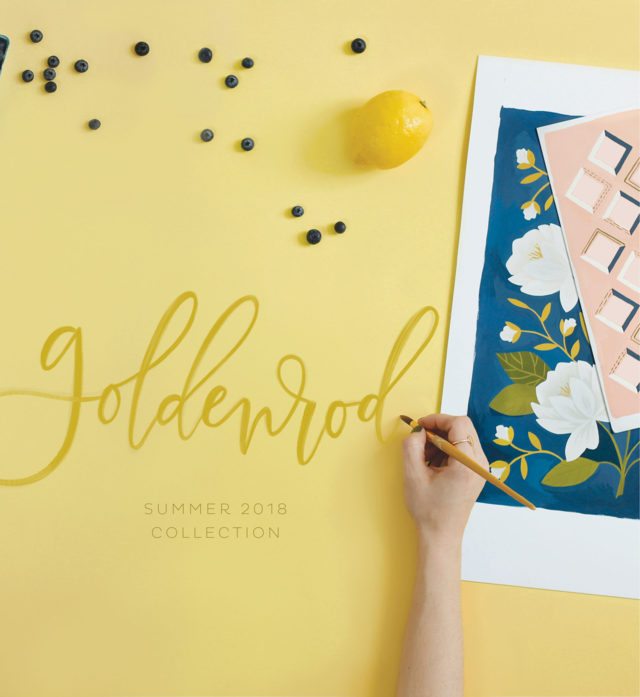
It’s definitely a fluid process, and we’re fine tuning it for our next collection, but I think we achieved our goals of creating an exciting, cohesive collection that has a clear intention. As we’re working on new products for the year, we’re painting new artwork and also using other artwork from the collection to put onto sketchbooks, notepads, cards, etc. But when it’s time to release all the new products, we have a massive library of artwork that can be used for future projects.

We thrive on a flexible work environment, but we have a lot of projects and we work as a team, so we have meetings. Generally, everyone is at the office on Mondays. We have staff meeting in the morning, and creative meetings in the afternoon. I personally spend a lot of time on big ideas and licensing partnerships. I think it’s my job to keep the company moving forward and creating amazing new things for our audience. I don’t know if it’s possible to accomplish all the big dreams we have, but our team is dedicated to trying!

All photos courtesy of 1Canoe2 except where noted.
Want to be featured in the Behind the Stationery column? Reach out to Megan at megan [at] ohsobeautifulpaper [dot] com for more details.





